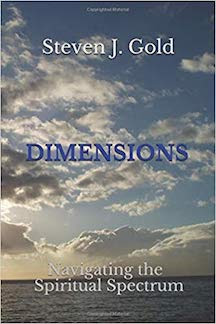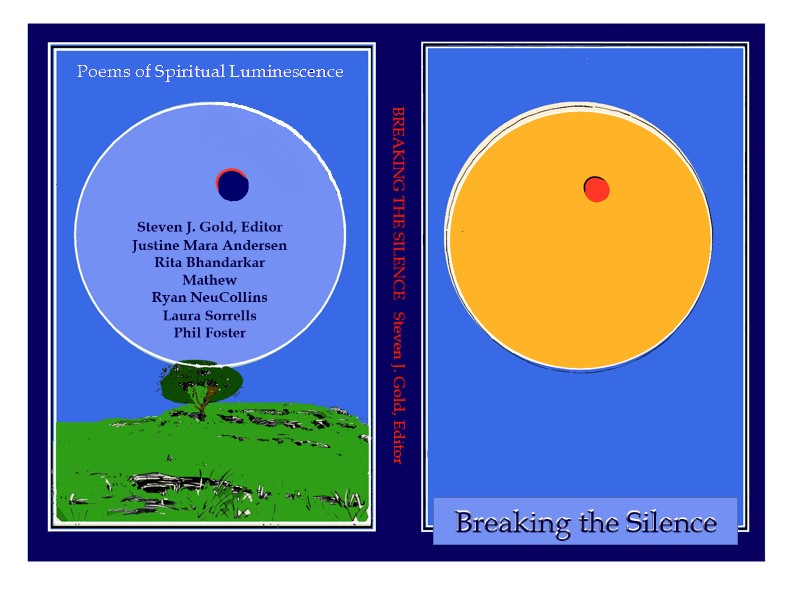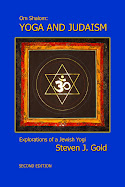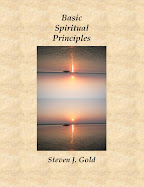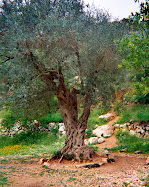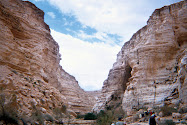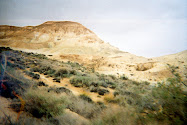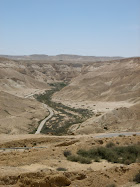Quote of the Week 419 - Listend/Hearing for Non-material Sustenance
Quote of the Week 419 - Listening/Hearing for Non-material Sustenance
Every one who is thirsty, come and drink. He who has no money, come, buy and eat. Come, buy wine and milk without money and without price. Why do you spend your money for that which is not bread and your labor for that which does not satisfy? Listen carefully to Me, and eat what is good. Let your soul delight in abundance. Incline your ear, and come to Me. Hear, that your soul will live…
--Isaiah 55:1-3, The Living Torah translation by Rabbi Aryeh Kaplan
Meditation (Click your selection, scroll down to view it)
- Audio Link: Interview - You Cannot Avoid Mystery; Eastern Meditation
- Audio Link: A Foundation for a Fruitful Meditation Practice: Science of Breath/Pranayama/Relaxation - Theory and Practice
- Audio Link: (Scroll to 11/04/18 entry) The Breath and Life Force; Guided Meditation - I Am an Empty Shell, Therefore I Am Full, etc.
- Meditation Basics - Expanded Version
- Meditation Basics - Condensed Version
- Mantra Meditation Basics
- Nada Meditation - Anahata/The Unstruck Sound
- Jewish Yoga Meditation
- Hebrew Mantras
- Hebrew Mantras, Part Two
- Hebrew Mantras, Part Three
- Hebrew Mantras - Adonai Hineni
- Healing Meditation: Ruach El Shaddai/Breath of Balance
- Meditating, Eating and Sleeping
- Shortcuts to Spiritual Development?
- Audio Link: Guided Meditation - I Am and Empty Shell, Therefore I Am Full; A Meditation on Emptiness and Dark Luminescence Based on the Opening Lines of Genesis
- Guided Meditation: The Stage
- Guided Meditation: I Am an Empty Shell, Therefore I Am Full; A Meditation on Emptiness and Dark Luminescence Based on the Opening Lines of Genesis
- Guided Meditation: The Rod, The Staff, and The Star
- Torah-Veda Meditation Class Site
- Interspiritual Contemplative Group
CURRENT TEACHING SESSIONS
Thursday, June 19, 2008
Quote of the Week 52 - The Sacred Walk
“The second-century Rabbi Shim’on bar Yochai taught that there are three sounds which never leave our earth. At first they wander from one end of the planet to the other, and then they come to rest in the soil of great canyon walls. These three sounds are: the sound of birthing, the sound of the soul leaving the body upon death and the sound of the snake shedding its skin. These three sounds never leave our sphere of existence because they are the sounds of our greatest challenge, surrender to the unknown, a challenge that is in our face each and every moment. This teaching is fundamental wisdom to walking our life journey. Because the Sacred Walk challenges you to be in that place at all times, the place of awe at this life and at your truth in this moment no matter how frightening it might be at times. That place is sacred. It is God, who is known in the ancient Hebrew also as ha’makom, literally ‘The Place,’ for God is the Place of the Universe, and in that moment you are all of what this universe is all about: Presence.
--from Magic of the Ordinary, by Gershon Winkler
Thursday, June 12, 2008
Quote of the Week 51 - Yoga and Judaism
“The ancient philosophy of Samkhya, which is the basis of yoga, and the philosophy of Kabbalah seem to have the same source. According to the Kabbalistic system, life is associated with numbers. This is an ancient Samkhya concept. Many of the teachings of the Gita are similar to Judaism. These two great religions, Hinduism and Judaism, are similar and are the most ancient religions in the world. The B’hai temple and religion accepts and emphasizes this fact in its monogram and its literature. The concept of Sri Yantra, a highly and scientifically evolved ancient yoga process for enlightenment, centers on the Star of David, also known as the anahata chakra in yoga literature and as the Sacred Heart in Christian practices. Sri Yantra was most probably known to the ancients of the Temple of Solomon. According to the spiritual literature of the ancients, it is a very sacred yoga process. It helps one to establish his relationship with other beings, the universe and its Creator.”
“I believe that yoga is a complete science of life which is equally applicable and helpful for men, women and children. Religions are social sciences which help to maintain culture and tradition and support the lawful structure of human society. Yoga is a universal science for self-improvement and enlightenment. All the methods of self-growth which are found in any religion are already in yoga literature.”
“It is necessary for the religious and spiritual leaders of various groups from different parts of the world to meet, discuss and share their philosophies and ideas. I am very firm in my opinion that all great religions are one and the same, though their ways seem to be different. Diverse are the ways of enlightenment, but the goal is one and the same. If the spiritual leaders meet, discuss and understand other paths, they can help their communities and thus lead them to communicate with different groups and religions of the world. Anyone who says that his religion is the only true religion is ignorant and misguides the followers of that religion. Prejudice is like a poison that kills human growth. Love is inclusive and is the foundation of all great religions.”
“We [practitioners who have progressed through study and practice of the yoga system of Pantanjali, Advaita Vedanta, Sri Vidya and Prayoga Shastra] do not associate ourselves with any particular religion, caste, sex or color.”
--from Living with the Himalayan Masters, by Swami Rama
Saturday, June 7, 2008
Is Yoga Kosher?
A friend told me about this discussion, and I feel moved to make a contribution. In order to be properly understood, I think it important to start out by providing the perspective from which I am approaching these subjects. I was born Jewish and my childhood Hebrew School and Bar Mitzvah were through the neighborhood Modern Orthodox synagogue, although my family was not very observant other than for the normal major holidays. In my late teens, I went through an atheist period, rejecting the childhood notions inculcated in my early religious education. Around this same time, I began to be exposed to Eastern thought, yoga and meditation, which I found quite attractive, and I settled into a spiritual path through a traditional Indian yoga/Vedanta lineage, updated for modern sensibilities. I have remained engaged in this path for over 30 years now, but beginning several years ago, I was also led to reinvestigate Judaism from an adult perspective and through the eyes of a practicing Jewish yogi. As many recent polls have indicated, I am one of many Americans who consider myself spiritual, but not religious. For me, religion incorporates spirituality, and clothes it in theology, dogma, doctrine and ritual, which at their best, help communicate and enliven spirituality, and at their worst, obscure, conceal and choke it. So I have always looked for spirituality within a variety of religious sources, finding it most prominently communicated in the mystical branches of many religions. I have felt a particular affinity with Indian yoga/Vedanta and Judaism/Kabbalah, two of the world’s most ancient spiritual traditions from which many others have derivatively sprung. I believe that there is true, unadulterated spirituality that precedes religion and that can be found within religion if one looks carefully. There are strains of yoga/Vedanta that attempt to communicate this pure spirituality, but because it developed in India, many of the same terms and concepts were also incorporated into Hinduism (and for the sake of clarification, “Hinduism” is a term foisted upon these people by Westerners; Hindus maintain that the real preferred term for their religion is “Sanatan Dharma”, which means “The Eternal Path”). So there is inevitably a lot of confusion over what is purely spiritual yoga and what is colored with Hindu concepts. Judaism has traditionally always been regarded and presented as a religion and even something more, a total way of life with ideally no separation of church/religion and state. But what attracts me to Judaism is the incredible spirituality that it contains and communicates. I do not have much interest in the religious elements other than as they may truly enhance spirituality.
Although I do not agree with all of its doctrines, I have great respect for the Chabad movement because it communicates a great deal of the spirituality within Judaism that has not been communicated by other traditional movements. I know the tremendous respect with which all of the Rebbes have been regarded, including Menachem Schneerson. However, I disagree with several of the points he made in his piece on meditation referenced in these discussions. I think the disagreement arises because of different perspectives. He was operating as a proponent of Judaism as a religion, and I am interested in spiritual, but not religious Judaism. He speaks with approval of meditation techniques that are truly secularized as stress management techniques, while disapproving of any with spiritual or religious intentions outside of Judaism. It is apparent to me that meditation originated as a spiritual exercise, a means to discover, nurture and express spirituality, and that is why it is so significant to me. It is also apparent to me that the physical yoga exercises, along with the breathing techniques and the moral dictates, as found in the classic system of Raja Yoga/Ashtanga yoga elucidated by Patanjali, were originally propagated as part of a system for spiritual development, and served as preliminary stages of preparation for meditation meant for deepening one’s spiritual nature and development. It is also apparent that our Western culture has succeeded to a large extent in de-spiritualizing the physical exercises to a great extent, and even the meditation, possibly to a lesser extent, turning them into ends in and of themselves (physical exercises just for the sake of physical fitness, meditation just for the sake of stress management). These are the forms that the Rebbe approved. But my interest is in them as tools for spiritual development, for which they were originally intended.
I do not subscribe to the concept promoted by Rabbi Laible Wolfe that there is a “Jewish soul” unique to Jews, a concept similar to what Chabad teaches of a “G-dly soul” unique to Jews, and that spiritual practices not native to Judaism are harmful to these souls. No matter how much current proponents of Jewish spirituality and mysticism claim that Judaism is a distinct and complete system for the development of the souls of Jewish people, and warn against dabbling in any other spiritual systems, I don’t buy it. There is no question of major overlaps and commonalties between spiritual and mystical teachings and practices that transcend time, place, and ethnicity. I have no problem merging and synthesizing useful elements from all approaches.
Rabbi Schneerson warns against involvement with Indian guru cults. But when I hear and read about the relationships between Chasidic Rebbes and their students, these stories are remarkably similar to stories about Indian gurus and Zen Masters and their students. The Jewish advocates always want to make distinctions, and illustrate how the Jewish way may seem similar to other approaches, but in the end the Jewish way is always the best. This is another idea I just don’t accept. I think that there are many valid spiritual approaches from many sources that can be merged and synthesized for individual spiritual benefit, incorporating the best of all worlds, as some augment others.
Concerning the controversy over the Sun Salutation, I agree with the comments that it is merely a conglomeration of several other unobjectionable yoga postures into a series of movements that unfortunately somehow was ascribed its designated name. My limited research into the origin of the name and the exercise came up with the result that nobody knows for certain who developed it or why it was so named. There is no question that on the surface, the name can be construed as worshipping or praising a sun deity. However, it can just as easily be construed that it is in praise of the Source of the sun, the One Source that is the Source of all. Despite its stress on emphasizing The One, Judaism recognizes and acknowledges many names and attributes to The One: YHVH, Elohim, Adonai, El Shaddai, Ehyeh Asher Ehyeh, Ein Soph, Moshiach, Mogen, the thirteen attributes of mercy revealed to Moses, the names of the Sephiroth, etc. The prayers and blessings of Jewish liturgy are replete with acknowledging the benefits of all of the many varieties of manifestation that have been provided to us by The One, to which we are forever expressing our gratitude, and the many attributes, names and functions by which The One is known and operates. We don’t praise the bread or the wine, we express thanks to the Creator who provided them to us for our sustenance and enjoyment. So why can’t Jewish yogis express gratitude to the Creator for providing us with the sun, the instrumentality of the Creator that enables life as we know it to exist? The Torah tells us that the main entrance of the Temple was constructed to face East in order to receive the first rays of the rising sun. So why is it so horrible to conduct a series of exercises that does the same thing? While Judaism keeps all of the names, qualities and attributes designated to The One in the more intangible realm of name and sound, Hinduism takes it one step further and deifies/personifies these aspects, thus violating the Jewish dictate against idolatry. However, whenever I consider how Jews regard the Torah, placing it in a special housing, rising before it, bowing to it, dressing it, undressing it, kissing it, dancing with it, crying over it – I think of how the average Hindu would behold all of that and conclude how similar it is to how they regard their idols.
As Rabbi Freeman recognizes, Hinduism teaches that there is ultimately One Source of all, just like Judaism. And I hope that Jews don't sit in judgement over Hindus as pagans and heathens due to their pantheon of deities and idol worship. Perhaps it may not be the avenue for Jews, who keep those distinctions on an intangible level, but that doesn’t mean it is not a legitimate religious avenue for others. Kabbalah teaches that there is a spark of Divinity within all beings, the source of internal and external peace and well-being. What is so different, then between the Indian greetings of Namaste/Namaskar which acknowledges this and the Jewish greeting of Shalom?
One area in which I think Judaism is lacking is its overemphasis on the value placed on engagement in everyday common family life, to the exclusion of any other lifestyle. I honor the idea that most of us are here to engage in such activities as participants in the design of manifestation. However, significant contributions can also made in more subtle, quiet, reclusive endeavors. Most other religions acknowledge that there are those of an introspective, reclusive, monkish nature who should also be accommodated and who can contribute in their own unique ways. Judaism seems to be one of the few enduring religious traditions that has not made such an acknowledgement or accommodation.
Rabbi Freeman warns against a kind of transcendence that can serve as escapism. I agree that it is not appropriate to regard life as a prison that needs to be escaped from, or posing a puzzle with the solution being an avenue for an exit as soon as possible. And I believe it is true that some forms of Eastern spirituality seem to promote this attitude and approach. However, I believe there are other strains of Indian spirituality that encompass what is sometimes referred to as “Practical Vedanta”: there is a kind of transcending afforded by meditating on a daily basis that is not escapism, but is as significant and inherent in our nature as are many other activities in which we engage on a daily basis for our overall well-being, such as eating and sleeping. Proper and regular diet, sleep, exercise, and yes, transcending through meditation, are for me all elements essential for optimizing functionality in the external world. The empty mind that one contributor to this discussion warned against is not really empty, it is just quiet and still, remaining vibrant and poised for more efficient functioning when called upon. Likewise, the Void referred to in Zen is not really empty, it is the realm of the unmanifest potentiality from which all manifestation and actualization springs forth.
Concerning the nachash, the infamous snake, there is no question in my mind that it is a reference to that same power known in yoga as kundalini/serpent power. There was reference in this discussion to Jewish teachings warning against involvement with such a thing. Yoga teaches to approach such power with proper preparation and great caution, as it is the most subtle, but greatest, power of all manifestation, from which the rest of manifest life emanates. I believe the traditional restrictions on studying Kabalah served a similar purpose to assure proper preparation before approaching such potency. The kundalini is also described in yoga as the feminine aspect of The One dwelling within all manifestation, by which all manifestation is made possible, and through which one can spiritually develop and use as a tool to commune with The One. There is thus also no doubt in my mind that what is called “kundalini” in yoga is the same as what is called “Shechinah” in Judaism, the presence of The One dwelling amidst manifest life. In fact, the consonants for “Shechinah” are phonetically similar to the consonants of “Nachash” reversed. The true function performed by the serpent in the Garden was to act as an agent of The One to complete the task of bringing manifest life as we know it into being, by causing primordial Man/Woman to be propelled out of the Garden into the life of manifestation and duality as we know it, retaining both the “good” knowledge to remember that all emanates from The One, and the “evil” inclination to forget that and become lost in a sense of separation, the primary root of all evil. Pharaoh was the ultimate expression of this worldly power and sense of separation gone astray and deified as the Be-All-and-End-All, represented by none other than the same serpent embodied in his headdress. Moses’ first encounter with Pharaoh was to illustrate that this ultimate of earthly power of manifestation was not to be deified, but rather to be used as our support to praise and do the work of The One from which it emanated: it served as his walking stick/his ability to function in the world (the Hebrew word for the snake that emanated from Moses’ staff is none other than “nachash”). “Thy rod and thy staff, they comfort me.” It is indeed tricky to take the snake by the tail, as Moses did, but that is what is necessary to achieve the mastery of life which leads to the ability to become the perfect humble servant to the Originator of life.
Thursday, June 5, 2008
Quote of the Week 50 - Leaps of Faith
The earth is indeed lovely, I realized…And so I decided to take a leap of faith. Life is, after all, a series of leaps of faith. Falling in love and believing that I will grow old with my husband is a leap. Losing a parent and believing I will recover is a leap. Giving birth to children and letting go as they grow, hoping they will lead safe, happy lives is a leap. Living in a world of chaos, believing good will prevail over evil, is a leap. I [finally] felt a connection to God…Maybe I could hold God’s hand as I leaped.”
--Priscilla Warner, from the book, The Faith Club: A Muslim, A Christian, A Jew – Three Women Search for Understanding, by Ranya Idliby, Suzanne Oliver, and Priscilla Warner
Monday, June 2, 2008
Spiritual Connections: Yoga and Judaism
Spiritual Connections: Yoga and Judaism
By Steven J. Gold
There has been a growing recognition in our culture of a distinction between spirituality and religion. Recent polls indicate that there is a sizeable segment of our population who acknowledge that they are “spiritual”, but not necessarily religious. I jumped on that bandwagon a long time ago, and have been merrily riding on it ever since. I have sought out spiritual elements from many sources, but I have had a particular focus on the equally ancient traditions of yoga and Judaism, from which have sprung forth many of the world’s other spiritual and religious traditions. Just as there is much more to yoga than the common conception of a system of physical exercises, there is also much more to Judaism than just a religion practiced by a small minority of the world’s population.
A close inspection and understanding of the texts and teachings from both traditions yields an incredible amount of commonalties and connections. The common conception of the story involving the much-maligned serpent in the Garden of Eden can be seen in a different light when the insights of yogic mysticism are applied. This serpent is representative of the Kundalini serpent-power described in yoga, whose energy and activity is essential for the existence of life as we know it. Adam and Eve were not intended to remain in the Garden. The serpent served as the instrument to get them out and get on with life. The exchange between Moses and Pharaoh was a confrontation between this serpent power properly employed in the service of the Divine, as depicted by Moses’ walking stick/staff turning into a serpent at his beck and call, versus the serpent power gone astray, placed on a pedestal and idolized as the headdress of Pharaoh, regarded as a flesh and blood God on earth, beholden to no superior power. Yoga and Judaism both teach that the purpose and goal of life is to yoke (same root as “yoga”) our inner power potential in service for the good of humankind, and to never forget its ultimate Source beyond all image, manifestation and understanding, to which we should surrender in awestruck praise and gratitude.
The book of Genesis in the Bible describes a river flowing out of the Garden of Eden and dividing into four major tributaries, one of them named the “Pishon”, which surrounded the land of “Havilah”, containing “good gold” and the “shoham stone”. Some Jewish commentators maintain that the “Pishon” is the Ganges and “Havilah” is India, to which the Bible pays homage by referring to it as the land containing “good gold”. Later on in the Bible, in the book of Exodus, these same mysterious “shoham stones” (which I believe are likely “Shiva lingams” described in the yoga tradition) are incorporated prominently in the vestments and breast plate of the Jewish High Priest.
Many are familiar with the Biblical story of Abraham and his two prominent sons, Ishmael and Isaac. Abraham is considered the originator of the Arab race through the lineage of his first-born son, Ishmael, and is also considered the first Jew and first Patriarch in the Jewish tradition, generated through his second son, Isaac. However, there is also a lesser-known story contained in the Bible about six more sons of Abraham born later in his life, whom he sent away to the East bearing his “gifts”. Some Jewish commentators maintain that these six sons sojourned to India, and the “gifts” they bore were mystical gifts for spiritual development and meditation. In India, they became what the yoga tradition refers to as the ancient Rishis, the originators of the Vedas and Eastern meditation practices and yoga. Proponents of the yoga tradition maintain that such practices originated in India and emanated out from there. And even the Bible acknowledges that Abraham was born somewhere East from the land of Palestine, to which he journeyed in his early adulthood. It was in the Eastern land of his birth that he received his basic revelation of an ultimate Divine unity underlying the diversity of manifest life, consistent with the teachings of Indian yoga and Vedanta.
It is quite clear in reviewing the writings of mystics from yoga, Judaism, and other varied traditions across all times and cultures, that there is a fundamental common recognition of this underlying unified Source of All. The distinctions and difference arise on more external, emotional and intellectual levels, all of which fall away as the realm of pure unadulterated Spirit is approached.
Bio
Steven J. Gold is author of the book, Yoga and Judaism (sub-titled Om Shalom: Explorations of a Jewish Yogi) available at http:/stores.lulu.com/yajc, and at major online retailers. Author’s blog: http://yajcenter.blogspot.com.

